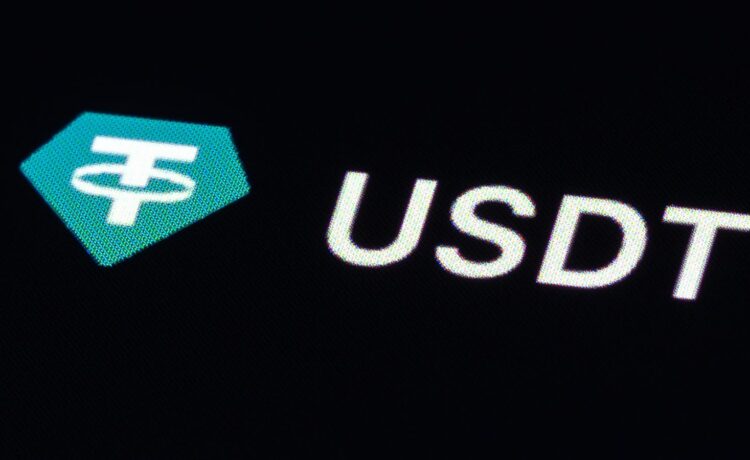Tether’s USD₮ stablecoin earned the company a record-breaking $13 billion in net profits in 2024.
Tether Holdings Limited announced $13 billion in net profits for 2024, setting records in U.S. Treasury holdings and USD₮ circulation. The company’s performance not only underscores Tether’s dominance in the stablecoin market but also highlights its growing influence in the broader financial landscape.
USD₮ By The Numbers
Tether released its Q4 2024 assurance opinion to reaffirm the accuracy of its Consolidated Reserve Report (CRR). Conducted by BDO, a global independent accounting firm, this marks the first independent assurance opinion to be released since Consumers’ Research criticized Tether, in an open letter to Washington’s then-Governor Jay Inslee, for failing to provide an audit proving USD₮ is backed 1:1 by USD.
The company’s record annual profit was driven by $7 billion profit from U.S. Treasuries and repurchase (repo) agreements, $1 billion from “other traditional investments, and $5 billion of unrealized profits from its gold and Bitcoin holdings. While GAAP records unrealized gains as a component of equity, under other comprehensive income, IFRS allows for unrealized gains to flow through the income statement immediately.
Holdings of U.S. Treasuries by Tether made it the 13th largest holder of the asset.
Tether’s $113 billion in direct and indirect holdings of U.S. Treasuries, signalled another all-time high. On it’s own, Tether would be the 13th largest investor in U.S. Treasuries globally, just between India ($147.8 billion) and Saudi Arabia ($121.6 billion). This would account for roughly half of all stablecoin market capitalization today.
The company’s excess reserve buffer topped $7 billion for the first time, growing 36% year-on-year. This metric is most analogous to a bank’s liquidity coverage ratio. Under Basel III rules, banks must hold enough high-quality liquid assets to cover one month’s worth of cash outflows. While it’s unclear how much USD₮ is burned in any given month, the company was able to process $11.1 billion of withdrawals during the collapse of LUNA in May 2022.
Audits And Assurance Opinions
While similar in scope, audits and assurance opinions vary widely in scope and depth. Meant to provide a level of confidence and reliability on the information examined, assurance opinions do not carry the same legal implications as audits.
Audits are assurance opinions are essential to establishing trust and transparency in stablecoin … [+]
Audits are typically more comprehensive in nature and subject to stringent regulatory standards and oversight than assurance opinions– an important distinction given the complexity of historic financial reporting. In August 2022, Tether confirmed BDO Italia would attest to the company’s future assurance opinions.
USD₮ Reserves Shrouded In Mystery
Tether’s operations and the quality of their reserves have long-been the focus of concern by investors and consumer watchdogs like Consumers’ Research.
Evergrande, one of China’s largest real estate developers, racked up $300 billion in liabilities … [+]
In 2021, one of China’s largest real estate developers, Evergrande, faced worsening conditions as its balance sheet ballooned to over $300 billion in liabilities. Evergrande became the poster child for China’s economic crisis and subsequently filed for bankruptcy protection in the United States in 2023.
As Evergrande faced a deepening liquidity crisis, questions arose around Tether’s exposure to the company’s Commercial Paper (CP). CP is a highly common form of short-term (less than 365 days) debt that is considered extremely safe because of its short duration.
As part of a settlement relating to the $800 million Bitfinex collapse, Tether agreed to provide … [+]
In May 2021, Tether released a composition report in compliance with a settlement reached with the NY Attorney General’s office after an investigation into the $800 million collapse of Bitfinex, Tether’s sister crypto exchange. At the time, CP accounted for almost half of USD₮ reserves.
Refraining from providing any detail around its holdings in CP, the company did little to assuage market concerns surrounding their holdings, including some reports that up top 85% was in Chinese or Asian companies. By October 2022, Tether wound down its commercial paper exposure to zero, replacing it with U.S. Treasury Bills.
USD₮’s Operational Efficiency
Portfolio and operations intrigue notwithstanding, it’s essential to compare Tether’s performance with that of traditional financial services firms. Using dollar of profit per employee and dollar of profit per customer, we can compare Tether’s efficiency and reach with that of traditional financial services firms.
Tether’s $ Profit/Employee and $ Profit/Customer highlight its operational efficiency and commercial … [+]
Tether’s $13 billion profit in 2024 was achieved with a relatively lean operational structure. With an estimated 400 million users globally, Tether’s profit per user (customer) stands at approximately $32.50. While modest compared to TradFi mainstays like Goldman Sachs, the company’s 400 million customer base and profit of $104,000,000 per employee is a testament to the company’s widespread reach and adoption of USD₮.
USD₮ In the Spotlight: Howard Lutnick’s Confirmation Hearing
Prior to his Commerce Secretary confirmation hearing, it was learned that Howard Lutnick’s Cantor … [+]
During his confirmation hearing for Commerce Secretary, Howard Lutnick, CEO of Cantor Fitzgerald, faced intense scrutiny over his firm’s relationship with Tether. In addition to providing custody services for tens of billions of Tether reserves, Cantor Fitzgerald holds a convertible bond that could convert to a 5% ownership stake in Tether worth $600 million.
During Wednesday’s hearing, Senator Maria Cantwell (D-WA), Ranking Member of the Committee on Commerce, Science, and Transportation, raised illicit finance concerns involving Tether’s use by criminals around the world. Lutnick pushed back and said criminals often used the dollar and the euro then adding, “It’s like blaming Apple because criminals use Apple phones.”
Howard Lutnick affirms his support for USD-denominated stablecoins to be 100% backed by U.S. … [+]
Lutnick also affirmed his support for the audit of stablecoins. “I believe U.S. dollar stablecoins should be audited, [and] should be completely backed by U.S. Treasuries, 100%.” Responding to a Cantwell follow-up asking whether America should adopt a particularly robust stablecoin reserve audit process more rigorous than existing processes, Lutnick replied: “For sure.”
The Road Ahead: Challenges And Opportunities
Tether’s record-breaking profits and strategic investments have positioned it as a formidable player in both traditional and digital finance. Regulatory scrutiny and market competition will no doubt remain significant hurdles.
President Trump signed a flurry of Executive Orders including one supporting U.S. leadership in the … [+]
Favorable U.S. policy measures signal progress in the development of U.S.-led cryptocurrency projects. It’s unclear how much of an impact this will have on the stablecoin market and who will benefit the most.
“Diversification has become a key focus for Tether,” said Paolo Ardoino, reiterating the company will continue to build on this strategy in 2025. In December, Rumble announced a $775 million strategic investment from Tether.
The second-largest stablecoin by market cap, USDC, grew 78% year-over-year, outpacing incumbent, … [+]
As for the rest of the market, it has taken notice. The nearest challenger to Tether’s dominance, Circle’s USDC, had a market cap roughly 38% of the incumbent. However, it was the fastest growing of all stablecoins, growing 78% year over year.
In 2021, there were 27 stablecoins. By July 2024, there were 182 stablecoin projects according to DeSpread Research, a 574% growth rate over three years. If nothing else, Tether’s 2024 results will embolden entrepreneurs to launch stablecoin projects to challenge USDC and USD₮ stranglehold on the market.
Stablecoins, like USD₮ and USDC, are quickly establishing themselves as the bridges between TradFi … [+]
While setting a new benchmark for profitability and diversifying to expand its influence, USD₮ has led the way in demonstrating how stablecoins can shape the future of finance, bridging the gap between TradFi and the digital financial technologies.





